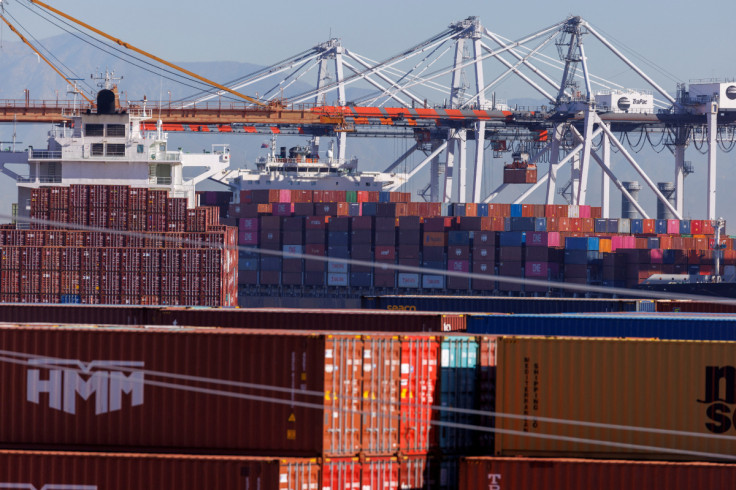
The start of a new year presents a great opportunity to look ahead to what the next 12 months could have in store. Since 2020, we've all witnessed the fragility and interconnectedness of the global supply chain first-hand. In order to build resilience and ensure that our shipping plans can withstand all potential shocks and disruptions, it's crucial to keep an eye on changing events and be prepared for wherever they might lead us in the near future.
To that end, here are four predictions as to what is most likely to affect the global supply chain in 2024.
Politics Will Have a Major Impact
Geopolitical issues already greatly affect the global supply chain and global trade, and that's going to continue. According to a recent survey by Oxford Economics, 62% of businesses view geopolitics as a significant risk to the global economy and global trade. In 2024, supply chain professionals would do well to keep a careful eye on international tensions and relationships, aware that they can significantly fracture the supply chain almost overnight.
Currently, the war between Israel and Hamas and regional troublemaking by Iran are affecting oil prices, which has an inevitable effect on trade and shipping. Iran-backed Houthi rebels have attacked shipping vessels in the Red Sea, threatening the Bab al-Mandab Strait, a strategic link between the Indian Ocean and the Mediterranean via the Red Sea and the Suez Canal. The attacks have forced some ships, including those of the world's two largest carriers, MSC and Maersk, to take a much longer route via the Cape of Good Hope. This alternative route adds 10 to 14 days to a vessel's journey and incurs higher fuel costs and increased insurance premiums because of the longer travel distance.
The Bab al-Mandab Strait is a key route linking Asia and Europe and facilitates roughly 12% of global trade, including 30% of all global container shipments. The U.S. is in discussions with 38 other countries to form a combined task force to ensure safe passage. However, if ships are unable to pass through securely, continued diversions could seriously reduce the speed and increase the price of global shipping both in the short and long term.
In another example, Russia's invasion of Ukraine in 2022 and the subsequent war greatly disrupted vital trade routes through Eastern and Central Europe and across the Black Sea. The International Transport Forum reports that international trade with Europe has decreased significantly compared to the U.S., and Europe-Eurasia trade has plummeted since the war began.
Furthermore, 2024 is an election year for many countries, including the U.S., the U.K., South Africa, India, Taiwan and Russia. The results could rewrite global trade norms. For example, Taiwan's anti-China DPP party is favored to win. This would lead to increased tensions with China and significant issues going forward.
Supply Chain Diversification Will Continue as a Result
Geopolitical concerns, together with other changing circumstances like shifting labor costs and fluctuating tariffs, are driving savvy companies to continue to diversify their supply chain. These companies wish to lower their operational costs and shorten lead times, as well as strengthen their resilience in case of disruption.
The search for new trade partners is leading to increasing reshoring, near-shoring and friend-shoring. Businesses are transferring operations back to the country in which they were originally located, a different country closer to home or a geopolitical ally.
One example is the nascent shift from solely producing goods in China, previously known as "the world's factory," to exploring other options such as India and Mexico. A report by BCG notes that U.S. goods imports from China fell by 10% between 2018 and 2022, while increasing by 44% for imports from India and 18% for Mexico. Over 90% of North American manufacturing organizations have moved some of their manufacturing away from China in the past five years, and a similar number plan to do so in the same period going forward.
Digitization of the Supply Chain Will Accelerate
In response to the many tensions threatening the supply chain, organizations are digitizing at least as fast as they are diversifying. Companies learned a lot from the pandemic when too many were unable to respond to rapid changes.
A digitized supply chain with end-to-end visibility is quickly becoming the industry standard, delivering more accurate insights and faster processes. A Deloitte study found that 76% of manufacturers are adopting digital tools to increase supply chain transparency. Fast networks, cloud computing and real-time data-sharing enable in-the-minute tracking that delivers greater agility and resilience.
At the same time, artificial intelligence (AI) promises to change the game. AI can automate supply chain management, optimize inventory organization and enhance overall efficiency. Supply chains will become more robust, pivoting easily between different routes, ports, transportation methods and providers as conditions change. While this profound change will take some time, I hope to see the first buds in 2024.
Be Prepared for Major Climate Disruption
2023 saw the highest temperatures ever recorded, alongside unprecedented flooding and wildfires. 2024 is likely to see a repeat of such incidents, if not worse, and sprawling supply chains mean that even a localized climate emergency can cause a global catastrophe.
The biggest near-term threat stems from drought in Panama. The Panama Canal is one of the most important global trade routes, with 40% of US-bound cargo and $270 billion worth of global trade traveling the canal every year. By November 2023, the number of ships dropped from a norm of 34 to 36 per day to 25 and is predicted to fall to 18 by February 2024. Meanwhile, ship capacity is constrained to 40% of normal weight. A Panama bottleneck could bring trade disaster, especially since the second most important gateway is at Suez, also threatened by geopolitical instability.
As a result, we'll see an ongoing focus on sustainability, alongside near-shoring and reshoring to shorten supply chains. The EU recently passed legislation requiring around 50,000 organizations to begin sustainability reporting next year, and similar legislation is likely to pass in the U.S. in early 2024. Critical mineral supply chains, which are vital for the clean energy transition, are under particular scrutiny.
Supply Chain Hazards Are Inevitable, but the Fallout Is Not
In the end, it's impossible to accurately predict exactly what will occur in a field as fast-moving and vulnerable as shipping and logistics. However, we can and should take proactive moves to anticipate potential threats and boost supply chain resilience.
As well as continuing to diversify and digitize their supply chain, those working in the industry should follow developments carefully and formulate predictions for the next 12 months and beyond as a vital element of their preparations. With a range of threats on the horizon in 2024, companies need to do all they can to bolster the strength of their supply chain and be as prepared as possible for all eventualities.
Carmit Glik is the CEO and senior executive at Ship4wd, a digital freight forwarding platform for small and medium-sized businesses. She has been at the forefront of digital transformation in the global freight industry — leading high-profile projects in digital freight marketplaces and delivering end-to-end global digital transportation solutions that are customer-focused and sustainable.







